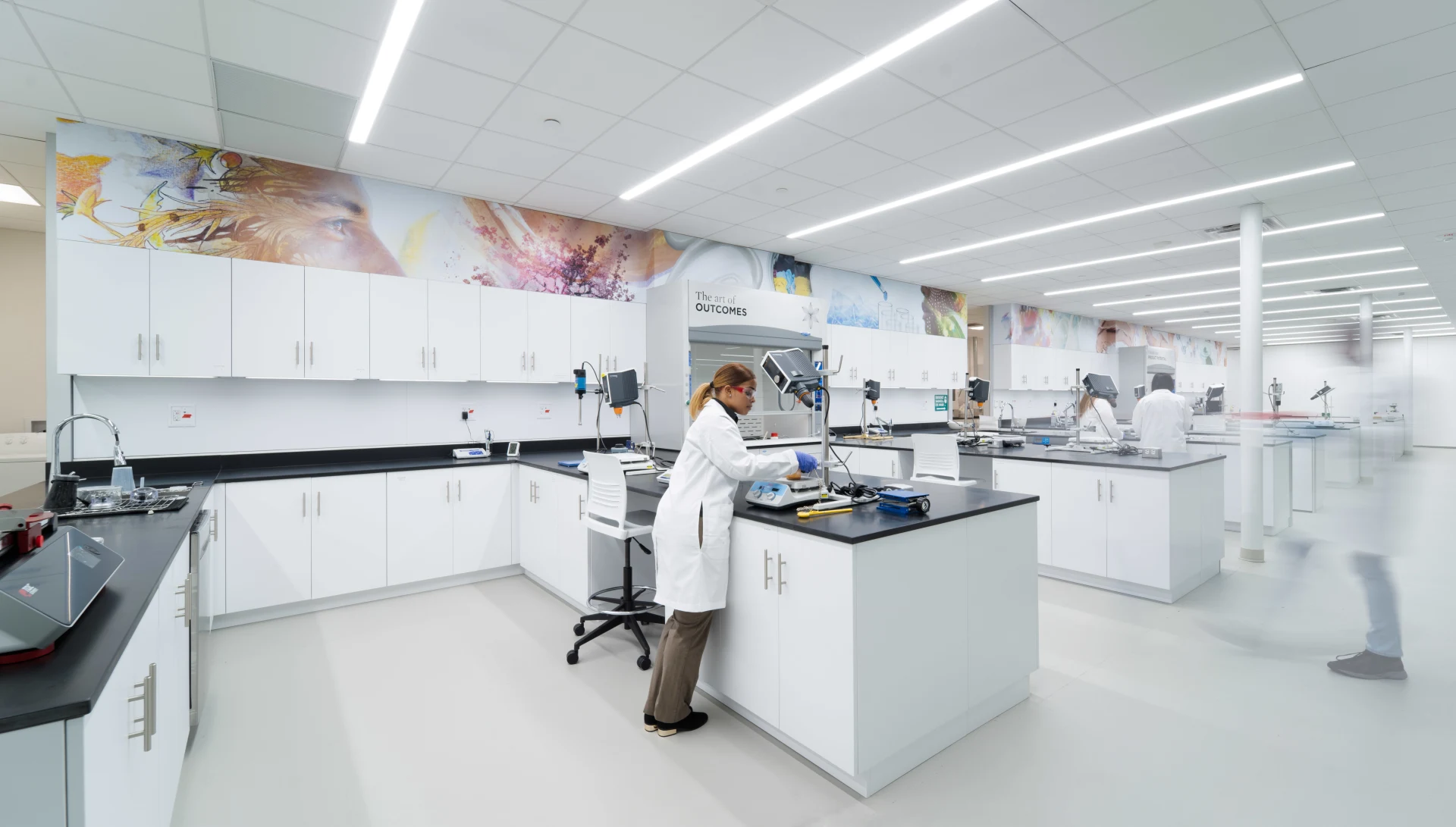Industrialized construction is providing the solutions for adaptable spaces that are needed amid the explosive growth and increased competition for talent.
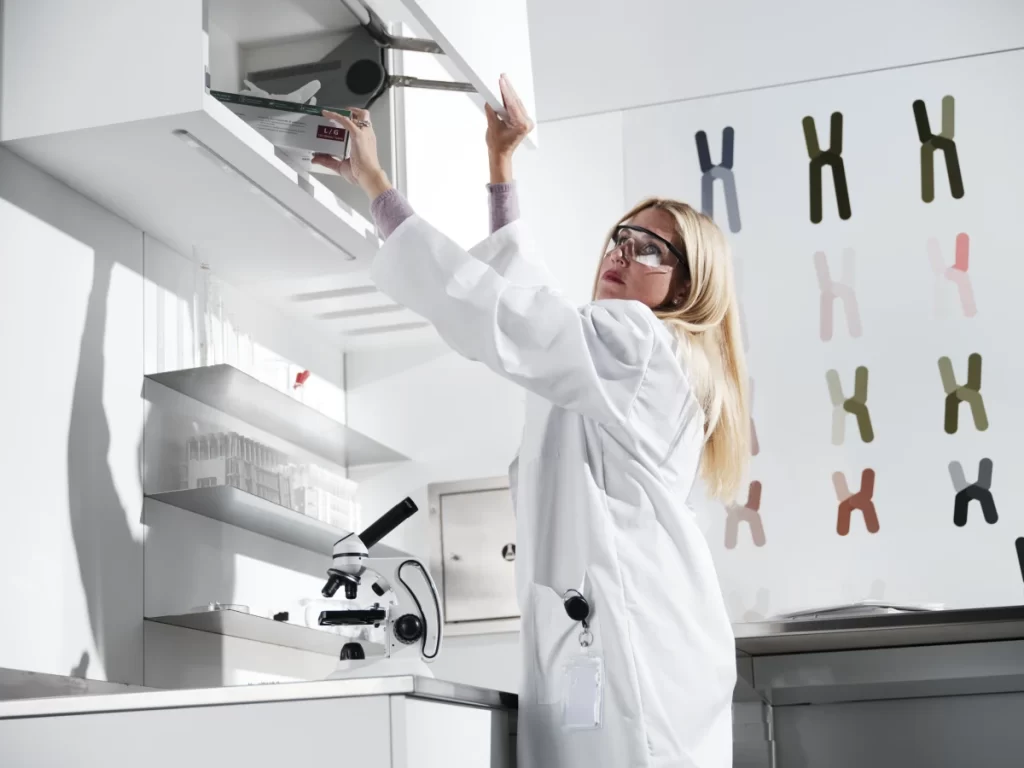
It’s the year 2038. Scientists gather to work on a “cloud lab” project together. One logs in from Singapore, another from Melbourne, and a third is located in Barcelona.
In real-time, they design and carry out an experiment, run by robotic arms and automated liquid handlers in an Atlanta laboratory under the watchful eye of a local technician, who is the only one actually on-site.
While this future scenario isn’t the norm yet, the way we design life sciences facilities is heading there. Historically, lab and research spaces were mostly clinical and designed to support the work being done, rather than the people who work in them.
This is changing, says Isabel Mandujano, Director of Laboratory Planning at LPA Inc., a sustainable design firm.
Now, fixed lab benches are becoming flexible and roll around on casters so a space can be adapted as new needs arise. Infrastructure — including electrical wiring and gas pipes — is housed in ceilings and walls with switches or valves that enable quick adjustment and reconnection in future, she says.
Meanwhile, adjacent office space is embracing human-centric innovation borrowed from other industries to encourage employee inspiration and collaboration.
The explosive growth of life sciences
Design shifts in labs are taking place against a backdrop of tremendous growth in the life sciences field. The industry was on a roll pre-pandemic, but COVID-19 has accelerated its trajectory.
In North America, private and public capital (to the record tune of $78 billion) flowed into life sciences-related companies in 2021, according to Cushman & Wakefield.
At the same time, demand for and the location of life sciences professionals is expanding geographically across the United States. JLL’s 2021 Life Sciences Lab Real Estate Outlook suggests that core clusters on the U.S. east and west coast, centered in saturated commercial real estate markets such as Boston, San Francisco, and San Diego will likely remain dominant. But emerging clusters in other locations, where talent is also concentrated, are on the rise.
“The last two years have seen an explosion of emerging markets [for life sciences workplaces] in cities that previously were not even part of the picture, including Chicago, Philadelphia, Atlanta, Oklahoma City, Dallas, Houston, and Austin, where companies are willing to relocate to be able to have more affordable space,” says Mandujano.
And these new markets are increasingly calling on flexible, adaptable, modular solutions to manage explosive growth — as well as attract and retain highly sought-after talent.
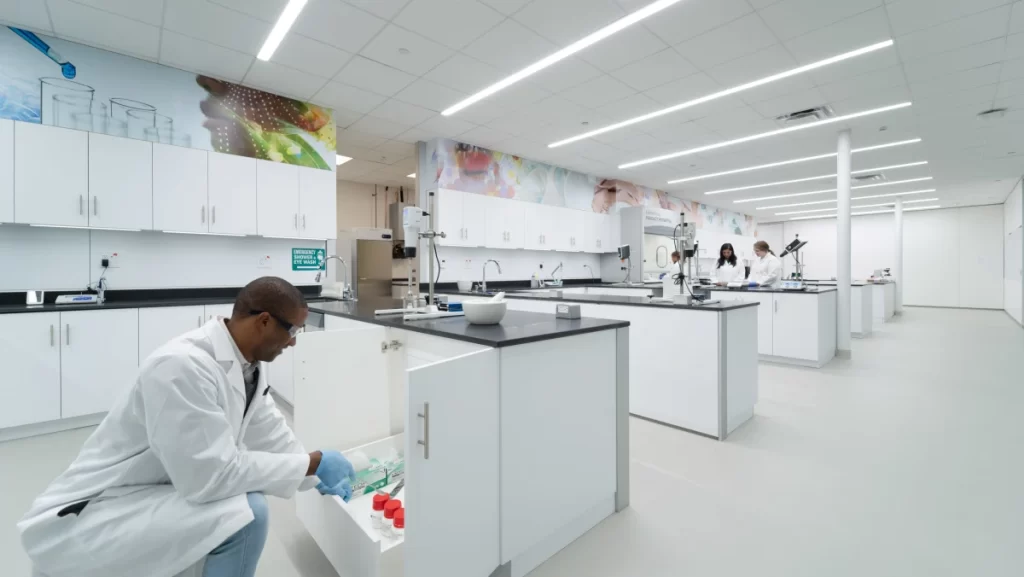
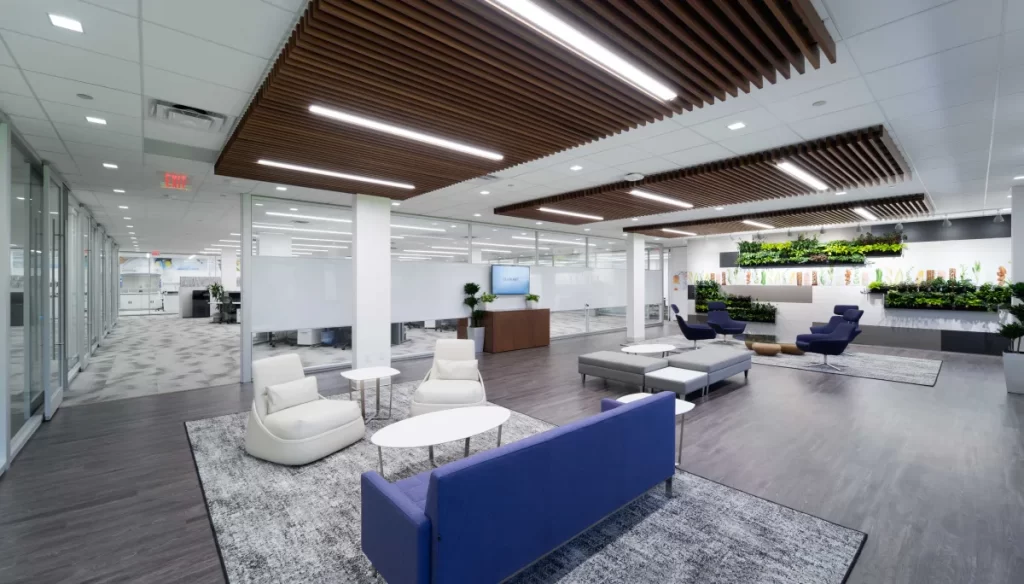
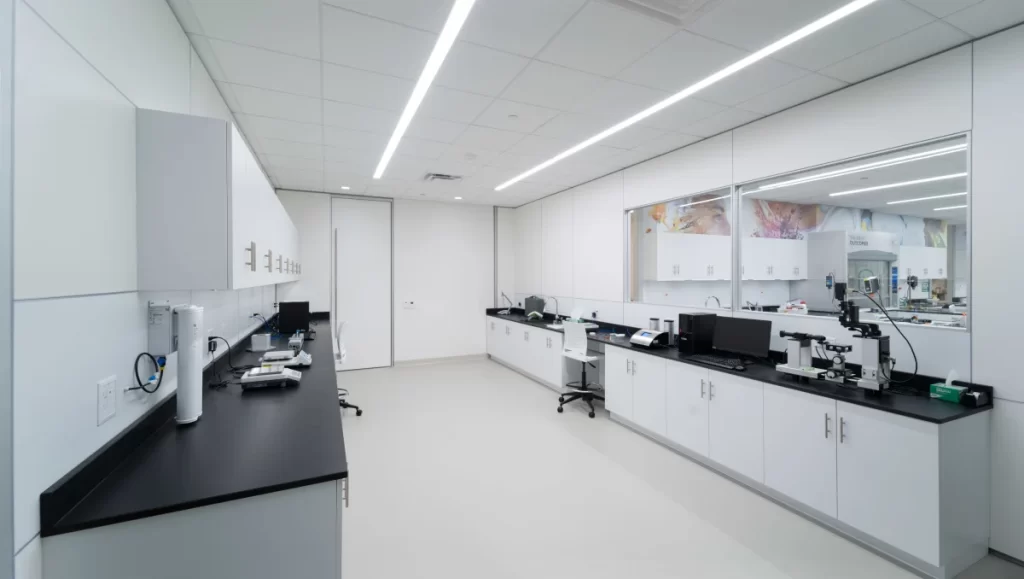
Managing rapid industry growth with prefabricated infrastructure
These days a life sciences start-up can go from bright idea to initial public offering in just a few years, says Mandujano.
On this accelerated journey, teams may grow from a handful of employees to hundreds over the course of a year or two, as well. This requires scaling up existing workplaces or transitioning into a new space without missing a beat.
As a result, there’s a growing need for commercial real estate that can easily be developed or converted to accommodate the industry’s complex and evolving needs.
“Modular design has been a tenet of laboratory planning for many years,” says Mandujano. “What is changing in the last few years is the opportunity to provide that move-in ready ‘spec lab’ that can be quickly adapted to different companies. Speed to market is really critical.”
In order to build spaces that can easily and speedily be adapted for lab use, many property developers are using prefab components to construct the baseline, mechanical infrastructure (think: heating, cooling, electrical, medical vacuum, medical gas access etc.) of a building, says Jack Conway, Vice President at Gil-Bar Health and Life Sciences, a modular construction company.
This means that when life sciences tenants take on a space, the key components they require to design and set up their specific “wet lab” are already available within the walls and ceilings — they can just modularly connect to that existing system.
As for other areas adjacent to the lab (lobbies, offices, conference rooms etc.), they are even more easily adaptable for future change when prefabricated, Conway explains.
“If they [tenants] move out five years from now, and I’m in another ‘build to suit’ situation as a developer, I’m able to salvage a large portion of that floor plate. Without intensive construction, garbage, and disruption to existing tenants, you’re able to minimize your construction time.”
And if you’re shooting for a 30 or 60 day construction schedule when swapping out commercial residents of a space, the only way to accomplish this is with modular solutions, says Conway.
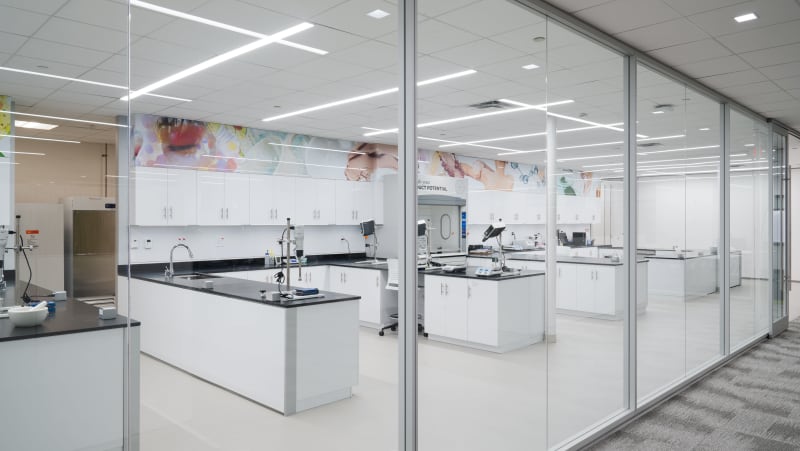

Yes, it’s possible to create beautiful, flexible life sciences workplaces
Creativity in lab design is of course constrained by specific functional requirements. But that doesn’t mean there isn’t scope for human-centric features that appeal to employees in an uber-competitive landscape.
For instance, some life sciences companies are incorporating biophilic design elements that echo nature and are more aesthetically pleasing.
Mandujano says this is actually possible within a controlled environment like a lab by using lab-safe materials that resemble wood, nature-inspired patterns on glass, ceilings, and artwork — even rounded corners that mimic organic shapes.
Designers also have more freedom now to rethink the use of space within a lab.
“The trend is for less dedicated bench space per person [and instead] more open, flexible lab space where the laboratory support is dedicated, for example, to an instrument [that is] a shared amenity that people can use as needed,” says Mandujano.
“It’s all about providing variety and choice, more collaborative and shared space, and less dedicated personal space.”
Today’s scientists don’t spend all their time conducting physical experiments anyways.
Office and activity-based areas outside the lab can (and should) be optimized for different flexible functions, ranging from spaces to complete computational science and data analysis to environments that foster idea sharing and brainstorming, she says.
“If [scientists] need more quiet space, less light, or if they need to step away and hear really loud music for a little bit, or take a nap … they can choose their level of engagement, or their level of interaction, or how much stimulation they need on that particular day.”
As in other industries, choice has become a key amenity that employees expect, Mandujano concludes.
